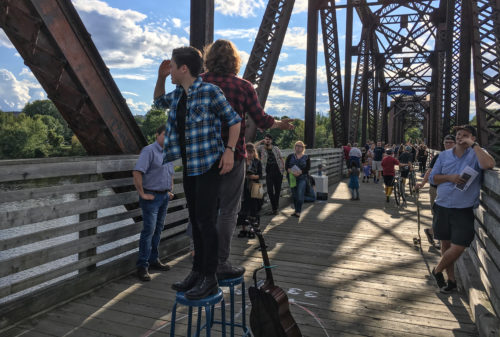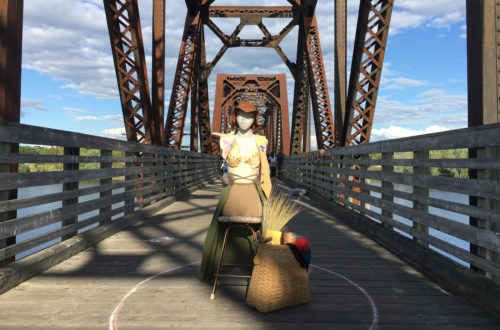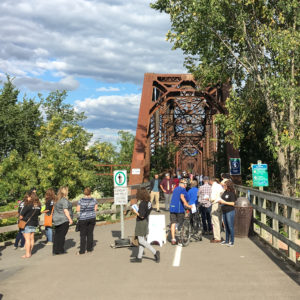The Bridge Project presented a beautifully balanced glimpse into the world in which we live.
Matt Carter

As a general rule, Fredericton plays it safe. That’s a common observation about the city many of us call home. Sure, it’s bursting with events and activities to engage and entertain citizens and help to animate our public spaces, especially during the summer months. But when you step back and look at all we have to enjoy or participate in as citizens or visitors to the GFA, the opportunities for community engagement that serve to challenge our perspectives and broaden our opinions of the world around us are indeed limited.
Don’t get me wrong. I love Fredericton. I think this city is one of the greatest places in the country. It’s beautiful, it’s clean, it’s safe and I have always found it to be a friendly place. But outside of the obvious traits many of us associate with New Brunswick’s capital city, I have never truly felt the city to be one that embraces experiences outside the ordinary. Fredericton plays it safe.
With this in mind, last Friday’s complete take-over of the Bill Thorpe Walking Bridge will forever live in my memory as one of the highlights of the year and a triumph for the artists who live, work, and aspire to ruffle the feathers of our beautiful little home on the river.
The Bridge Project was a single evening event that saw more than 50 artists from the region sharing their interpretations of life on the river with an eye focused specifically on the people who call this region home. Organized by Fredericton’s Solo Chicken Productions, together with an enormous group of volunteers and participants, The Bridge Project was conceived to not only celebrate our diverse population but also to question our understanding of past, present and future. Who are we? Where do we come from? And where are we going?
Starting last Friday at 5 p.m. and running until almost 8 p.m. (things ended a little early due to the rain), the event turned one of the city’s busiest commuter throughways into an arts pavilion with dozens of exhibits, performances and otherwise thought provoking installations, each animating moments in our shared history.
 In addition to celebrating the region’s familiar history, The Bridge Project was also very much an act of reconciliation. By walking from one side of the river to the other, audiences (and trapped commuters) were able to learn about our long history of cultural discrimination, from the Canadian treatment of Japanese immigrants during WW2 to the modern day struggles for equal rights and privileges facing our LGTBQ+ community.
In addition to celebrating the region’s familiar history, The Bridge Project was also very much an act of reconciliation. By walking from one side of the river to the other, audiences (and trapped commuters) were able to learn about our long history of cultural discrimination, from the Canadian treatment of Japanese immigrants during WW2 to the modern day struggles for equal rights and privileges facing our LGTBQ+ community.
Through visual art and live performances which included dance, song, theatre and poetry, many of which welcomed interaction and discussion, audiences were presented with both sides of history, from the heart-warming good to the tear jerkingly awful. By pairing our faults, our shortcomings and historical wrongs with moments of triumph, optimism and determination, The Bridge Project presented a beautifully balanced glimpse into the world in which we live.
The organizers, the participants, the supporters and everyone who helped bring The Bridge Project to life deserve a round of applause. Maybe even a standing ovation. Thank you for facilitating this community conversation and more importantly, for allowing us to recognize our short-comings, our strengths and just how diverse our little part of the world really is.




